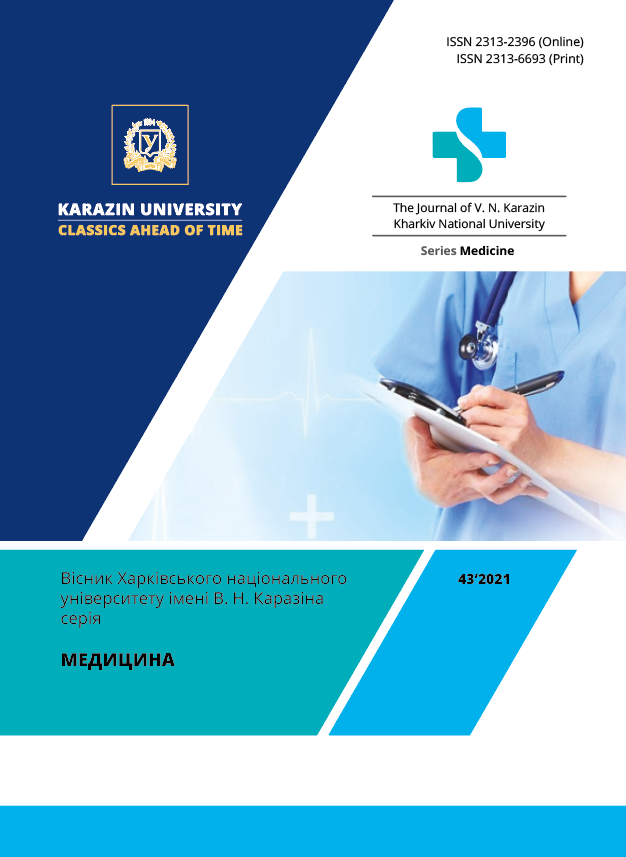The effect of different types of nasal tamponades in patients with nasal bleeding on mucociliary transport of the mucous membrane
Abstract
Introduction. The number of patients with nasal bleedings (NB) remains quite high (14.7–20.5 %) among all patients in need of emergency ENT care. When using anticoagulants and disaggregants, the risk of developing hemorrhagic complications is always higher. Otorhinolaryngologists have been improving the methods of stopping NC for many years. Objective: a comparative study of the effect of different types of nasal tamponade on mucociliary transport (MCT) of the nasal mucosa in patients with NB on the background of antithrombotic therapy. Materials and methods. The effect of different types of nasal tamponade on MCT of the nasal mucosa in 156 patients with NC who developed on the background of antithrombotic therapy was studied. All patients were divided into two groups: the main (104 patients), in which NB cessation was performed by the combined method, which includes the use of a two-chamber hydraulic tampon of our own design in combination with Nosochem gel and thermal exposure, and the control group (52 patients), where the classic gauze tamponade was used. The criterion for assessing the functional state of the nasal mucosa was the time of MCT when performing the saccharin test. Results. Immediately after removal of tampons, a significant acceleration of the MCT rate was observed in patients of both groups in comparison with the conditional norm. On day 3 after tampon removal, a significant decrease in the rate of MCT was observed in both study groups, which was more significantly (p <0.001) expressed in patients with traditional gauze tamponade. The MCT time indicator in the patients of the main group exceeded the level of the conditional norm by 36.9 %, and the similar indicator of the control group by 55.1 %. On day 7 after hydrotampon removal, time recovery was observed in patients of the main group. In patients of the control group on day 7 of gauze tampon removal there was a tendency to increase the rate of MCT. On day 14 after removal of tampons, the MCT rate in patients of the main group remained within the conditional norm, and the level of MCT rate in patients of the control group approached the conditional norm. Conclusions. Mechanical tamponade causes a violation of the functional state of the ciliated epithelium of the nasal mucosa, causing significant activation of MCT after removal of tampons, followed by a slowing of the MCT rate. Hydroballoon tamponade causes less expressed changes in MCT with a faster recovery period of the transport function of the ciliated epithelium compared to traditional gauze tamponade, what indicates a more gentle effect on the mucous membrane of the nasal cavity.
Downloads
References
Bequignon E, Verillaud B, Robard L. et al. Guidelines of the french society of otorhinolaryngology (sforl). First-line treatment of epistaxis in adults. Eur Ann Otorhinolaryngol Head Neck Dis. 2017; 134 (3): 185–189. Doi: https://doi.org/10.1016/j.anorl.2016.09.008
Beck R, Sorge M, Schneider A, Dietz A. Current Approaches to Epistaxis Treatment in Primary and Secondary Care. Dtsch. Arztebl. Int. 2018;115(1–2):12–22. Doi: https://doi.org/10.3238/arztebl.2018.0012
Babin SM. On specific features of the approach to management and forecasting of cardiovascular system diseases complications in patients with nasal bleeding. Russian otorhinolaryngology. 2016;6(85):103–106. Doi: https:// doi: 10.18692/1810-4800-2016-6-103-106 [in Russian]
Stadler RR, Kindler R, Holzmann D, Soyka MB. The long-term fate of epistaxis patients with exposure to antithrombotic medication. Eur. Arch. Otorhinolaryngol. 2016; 273: 2561–2567.
Doi: https://doi.org/10.5167/uzh-126073
Smith J, Hanson J, Chowdhury R, Bungard TJ. Community-based management of epistaxis: Who bloody knows? Can Pharm J (Ott). 2019 Apr 25; 152 (3): 164–176. Doi: https://doi.org/10.1177/1715163519840380. PMID: 31156729; PMCID: PMC6512189.
Кarnialiuk VA. The experience of nose tampons application with preservation of the nasal respiration function. Vestnik VGMU. 2021; 20 (3): 34–39. Doi: https://doi.org/10.22263/2312-4156.2021.3.34 [in Russian]
Tunkel DE, Anne S, Payne SC. et al. Clinical Practice Guideline: Nosebleed (Epistaxis). Otolaryngol. Head Neck Surg. 2020; 162 (1): 1–38. Doi: https://doi.org/10.1177/0194599819890327
Bezshapochniy SB, Gasyuk YA, Loburets VV, Vahnina AP. Structure-functional organszatiov of mucosa of nasal cavity and paranasal sinuses. Rhinology. 2011; 4: 3–13. http://www.lorlife.kiev.ua/rhinology/2011/2011_4_03.pdf [in Russian]
Laberko EL, Talalaev AG, Bogomil’sky MR, Bullikh AV. The method for the direct evaluation of the state of mucociliary clearance in the children. Vestnik Oto-Rino-Laringologii.2015; 2: 40–44. Doi: https://doi.org/10.17116/otorino201580240-44 [in Russian]
The Journal of V. N. Karazin Kharkiv National University, series Medicine has following copyright terms:
- Authors retain copyright and grant the journal right of first publication with the work simultaneously licensed under a Creative Commons Attribution License that allows others to share the work with an acknowledgement of the work’s authorship and initial publication in this journal.
- Authors are able to enter into separate, additional contractual arrangements for the non-exclusive distribution of the journal’s published version of the work, with an acknowledgement of its initial publication in this journal.
- Authors are permitted and encouraged to post their work online prior to and during the submission process, as it can lead to productive exchanges, as well as earlier and greater citation of published work.




